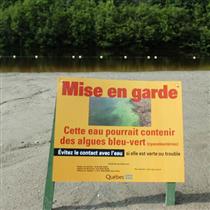Canadian lakes suffering from aquatic version of osteoporosis
MARTIN MITTELSTAEDT
ENVIRONMENT REPORTER
November 28, 2008
Globe & Mail
Scientists say they have found lakes in Canada that are losing some of the calcium dissolved in their waters, a condition they're likening to an aquatic version of osteoporosis.
The drop in calcium levels is being attributed to the effects of acid rain and logging, which together have depleted the element in the soil around lakes, reducing the amount that is in runoff and available for aquatic life.
The finding of a new threat to the lakes has potentially far-reaching consequences. Many species depend on abundant levels of calcium, a key nutrient used in nature to build the structure of living things, everything from the shells of birds' eggs to the skeletons of animals.
A paper outlining the discovery, made by a team of scientists from Queen's and York universities and the federal and Ontario governments, appeared in Science yesterday. The research was based on sampling conducted at 770 lakes, of which 60 per cent had calcium amounts near or below levels that harm aquatic life.
The lakes studied were primarily in Ontario's Canadian Shield region, suggesting that tens of thousands of other water bodies across the country may be similarly affected, along with many in the northeastern United States and Scandinavia, areas also sensitive to the affects of acid rain.
"We call it aquatic osteoporosis," said John Smol, one of the researchers on the project and a biology professor at Queen's University in Kingston.
Dr. Smol said he is worried about the health of ecosystems around lakes because "everything requires calcium."
The Ontario lakes were in five areas: the Muskoka region, around Sudbury, Sault Ste. Marie, Algonquin Park and Kenora. The scientists also looked at one lake in Nova Scotia and another in New York State.
Returning calcium concentrations in lakes to healthy levels will likely require further reductions in emissions that cause acid rain - primarily sulphur dioxide and nitrogen oxides from coal-fired power plants, metal smelters and cars - along with changes in logging practices, he said.
Under previously implemented pollution-control plans, emissions of sulphur dioxide in Eastern Canada fell by 63 per cent from 1980 to 2001, according to Environment Canada figures. As a consequence, acidity in many lakes has dropped to more normal readings, but the new findings suggests that even this massive emissions cut hasn't been enough to fully mitigate the damage from acid rain. The researchers believe the sharp drop in calcium has been under way for decades, and began in some areas as early as the 1970s.
When acid rain falls on soil, it quickly leaches out the calcium, and eventually exhausts the dirt's stores of the element, leaving little available to be washed into lakes. In the initial period of acid rain deposition, this effect temporarily increases the amount of calcium entering the lakes, but once the stores of the element are depleted, levels plunge.
Logging is also a problem because trees contain calcium they draw from the soil. When trees are cut and removed, their calcium is taken from the ecosystem. The calcium in uncut forests is returned to the soil when trees fall and decay.
The scientists were able to determine that calcium levels have fallen sharply by studying populations of a water flea called daphnia.
These water fleas are highly sensitive to calcium, and can't reproduce if amounts fall too low. The key level is a water concentration at or below 1.5 parts per million, which causes populations to crash.
Loss of the water fleas is a huge blow to life in the lakes because the creatures are a crucial component of the aquatic food web. They eat algae, and then become food for fish.
"Once calcium declines below a certain threshold, some keystone species can no longer reproduce," said Adam Jeziorski, lead author of the study and a Queen's PhD candidate. "These species and other organisms that feed on them are endangered."
Fish, crayfish and mollusks also have relatively high calcium needs.
The scientists were able to surmise the levels of calcium in the lakes over the past 200 years by looking at the remains of the fossils of water fleas in the mud at the bottom of lakes.
A mineral vital to marine life:
Calcium levels in forests and lakes in the Canadian Shield were believed to be relatively stable since the last ice age ended 12,000 years ago. But acid rain and logging has caused amounts to plunge.
HEALTHY ECOSYSTEM
Calcium levels are fairly constant
- Calcium gets into the soil through the weathering of rocks.
- Some of it is taken up by trees. When trees rot, the calcium is returned to the soil.
- Some is washed from the land into a lake, where it is taken up by water fleas (not really fleas), which in turn are eaten by water mites and phantom midge larvae.
- Water in the lake flows to the sea, but its calcium is constantly being replenished from soil runoff.
WHEN ACID RAIN OCCURS
Two things happen in sequence
- Acid rain leaches calcium out of the soil. It is washed into the lake where it temporarily increases such levels. As more acid rain falls, calcium levels decline there as well.
- Logging removes calcium absorbed in trees from the ecosystem.
- As calcium in the lake is reduced, the population of algae-eating water fleas plunges.




















